The Ministry of Defence has confirmed that collaboration with Germany on defence equipment is set to significantly benefit the North West of England, according to a recent response by Maria Eagle, Minister of State for Defence.
In a written response to Navendu Mishra, Labour MP for Stockport, the Minister stated that defence collaboration with Germany would positively impact both infrastructure and innovation in the region.
Eagle highlighted that the recent partnerships with KNDS UK in Stockport, particularly focused on the Bridging programme and the establishment of a new manufacturing facility for the BOXER vehicle, are expected to deliver more than £400 million in total economic benefit.
Eagle noted: “Collaboration with Germany on defence equipment will have a positive impact on infrastructure and innovation in the North West. Specifically, recently announced programmes with KNDS UK in Stockport, which build on the existing investment for Bridging, as well as investment in a new manufacturing facility for BOXER, will lead to more than £400 million in total economic benefit. Furthermore, the programmes will support investment in local supply chains and sustain highly skilled jobs. More widely, we are deepening equipment collaboration with Germany through the Trinity House Defence Agreement; this collaboration will lead to further economic benefit across the UK in the longer term.”
This development is part of a broader strategy to deepen defence equipment collaboration with Germany under the Trinity House Defence Agreement. The agreement aims to enhance UK-Germany cooperation on military technology and logistics, with a focus on generating long-term economic benefits across the UK.
The new BOXER manufacturing facility in Stockport is particularly significant, given the vehicle’s role in the British Army’s modernisation efforts.



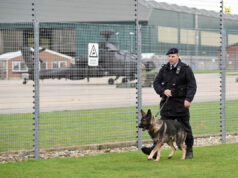

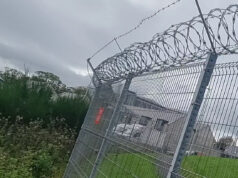

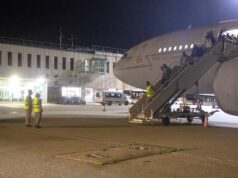
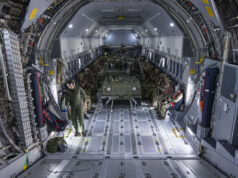
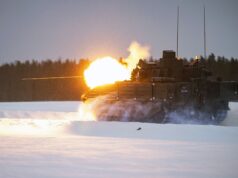
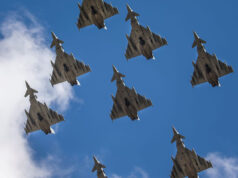
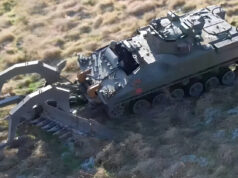
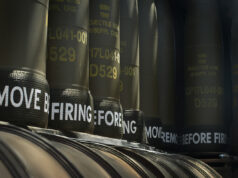

I just read that Boxer is produced to German standards of welding. Meaning we have to send workers to Germany to train on how they do welding and then they come back to help train other British workers
John, Not sure why the ‘standards of welding’ differ between UK and Germany.
It seems crazy to me!
Quote-
Andrew Kinniburgh, director general at Make UK Defence said there has been a lot of “train the trainer work” – where employees are sent abroad to learn the skills they can then teach back in the UK.
Pearson Engineering, a Newcastle based defence manufacturing firm helping to produce the UK’s Boxer vehicles, has also sent welders to Germany for training. Pearson welders have now retrained to the equivalent level of ‘6G’ – a British welding standard – in Germany.
They’ve all had to train their welders to German standards of welding, which are broadly similar to the British ones, but slightly different,” said Kinniburgh. “You have to go through the reaccreditation, so it’s been quite an overhead for our members.”
Our procurement and building of equipment is a total mess!
And to make things worse, we then try and “reinvent the wheel” with the stuff
I would not be surprised if Boxer numbers increase beyond the current planned fleet once the UK manufacturing base is fully established. Collaboration with Germany is a sound policy as the UK has much to share and benefit from their engineering excellence. The burning question: should the UK become member of the German/French MBT programme? Otherwise, we may have to go it alone or buy this tank without it fully meeting British Army specifications. The current harmony between the EU and the UK could work to our advantage and having the UK as a partner would greatly enhance the programme’s viability.
I think we have observer status on the French/German MBT. My googling suggests that the project was originally between French Nexter and Germany’s s Krauss-Maffei Wegmann, who were ‘absorbed’ into a joint French dominated company but that at some point Rheinmetal inveigled themselves into the arrangement with Thales. Who designs and owns the networking and systems architecture would be important I guess to the UK.
Unless it’s run purely by government, where one or two agents get involved the modern trend is to expose the project to the markets and see who and what turns up.
The Boxer numbers will have to increase or a supplemental vehicle will have to be purchased as currently the Boxer order is not enough to fully equip every unit that needs it.
As for the Franco-German MBT program, that depends on what that MBT is, and when it comes out. If it comes out in 2027 and is a 120mm smoothbore tank with modular systems like Trophy intigrated, then I’d say “no” because CR3 will be rolling off a production line and the money would be better spend taking more CR2 hulls (even if their condition means you have to spend a few million more refurbishing them) and upgrading them, than buying a brand new tank, and having a split fleet.
If that program however brings out a tank in 2035 that is a step change in capability, then yes, we should jump on it. Or order Panther. Depends on exactly what is on offer then.
I wonder if they still plan, as a ln officer suggested a few years back, to have more modules than chassis in the next batch?
Disastrous if so.
I hope they order a supplementary, Boxer is too expensive for all roles, as Warrior was.
You’d hope not. I believe I’ve gone into detail over why that would be a terrible idea.
My understanding is the project is still some time off with a number of variants in the mix. I would not rule out a mixed UK MBT fleet as the CH3 is drawn down from 2040 onwards. The plain truth, the 148 CH3 are not enough hulls to cope with only modest attrition and at least 250 vehicles will be a more sensible fleet. I doubt the Abraham’s replacement will be considered by the UK due to the expected high purchase and running costs, and zero powertrain options, if the current tank is anything to go by.
See above. There are enough CR2 hulls to allow an increase in CR3 (not CH3) numbers to the 2-300 mark without having to do a split buy, and CR3 is much (much) cheaper than any new buy. So even if you end up having to spend a few million more per unit in order to make the refurbishment of more degraded platforms economically viable for RBSL, it’s still a financial win over buying new.
In reality the French German tank is not going to be running of the production lines until the late 2030s and 2040s as both France and Germany hare just moving their 3rd generation MBTs to a 4th generation standard. So it would probably be about right if the Uk wanted a new tank operational for late 2040 early 2050.
If they only go with boxer they will need a hell of a lot more around an extra 1000-1200 on top of what they have ordered
What are they replacing
600 warriors
750 bulldogs
550 wolfhound/mastiff/ridgback
But another 1000-1200 boxer would be 5.6 billion pounds
In reality they could get a very good stanag 4 APC for 1.2million a pop or 1.2 billion for a 1000. They could also lifex warriors for about half the cost of a boxer…
Looking at those numbers, the Warrior OSD date of 2027, the spending constraints and the events in Ukraine I would see Boxer replacing mainly Bulldog ( which I think was the original intent) plus as a Sunak afterthought, (some) AS90. There has been a lot of discussion re 40mmCTA on Boxer or Ares but I suspect there is not enough money; I don’t think we will see a like for like Warrior IFV replacement. Credible talk of a Boxer version with 120mm mortar which is capable of direct fire, and we need an anti-drone capability; so yes, some more Boxers – but not 1000-1200. Thinking about the memorandum of understanding between Patria and Babcock I think your suggestion of a UK manufactured cheaper replacement for the 550 protected mobility vehicles is worth a small bet. I wouldn’t pretend to understand whether Patria 6×6 is a suitable replacement for all of these but I can see the attraction.
The next UK tank will almost certainly be either German or USA as we have General Dynamics plant in Wales and the two knds plants now also as well as the engineering facilities for challenger 3 which knds German company’s are involved in
Maurice, Currently two orders have been placed for 623 Boxers (523 plus 100). The army originally had a requirement for over 1400 Boxers, presumably to equip two Strike brigades (now a defunct concept) and Warrior was to be upgraded for the Armoured Infantry battalions in the armoured brigade combat teams.
Then it was declared in March 2021 that Warrior upgrade was cancelled, that Warrior would continue unmodernised but would start to be withdrawn from service from 2025 and that Boxer (bizarrely, given that it is just a MIV) would take its place. The 8th May 2025 MoD announcement states that Warrior will be withdrawn in (not from) 2027.
As Dern has said there are insufficient Boxer ordered. To take just the section carriers, there needs to be sufficient for 4 Inf battalions plus Training units, Repair Pool and Attrition Reserve. Only 146 of the 623 so far ordered are Infantry Carrier Vehicles (ICVs). So, I agree that there needs to be further orders for ICVs and certain other variants.
In your other point, Paul P correctly said that UK has Observer status on the Franco-German tank project. I think we need more than just one iron in the fire: perhaps have a UK-Germany collaboration, a UK-Japan, a UK South Korea collaboration or combination thereof. UK-Germany is promising as we have collaboration on CR3 already and a JV company well established (RBSL) and also a German tank is currently the preferred tank in Europe so exports of a successor may be good, bringing down unit cost etc.
Graham, as always, an interesting comment. Whatever partner the UK chooses, at least 60% will need to be assembled in the UK to protect jobs and skills. Unthinkable just ten years ago, Korea is now a world player in building armoured vehicles, and a joint project with them may be more engaging than being a member of the European effort? The chances of building complete vehicles in the UK might be possible, going with the Koreans? Keen to make deep inroads into world defence the prospect of a brand new British MBT plant would return us to a heavy armour manufacture. In 20 years, the concept of the MBT as we know it may look very different and unmanned designs more likely to be pursued as the trend of removing the human factor from the battlefield intensifies.
The Eagle has landed (a great desk job).
More importantly how’s it boosted our neglected military? As usual all that these cretins talk about is the economy.
Standard.
In fairness the economy is important, and like it or not, most people will vote for the economy over the armed forces, so I’m all for pressers stressing that “hey this boxer program means there will be a job for your unemployed cousin.”
The govt would argue problem = opportunity. We need to rebuild the army and navy and we need to strengthen hi tech engineering manufacturing sector skills and create jobs. So invite BAE, Babcock, Rheinmetal, RR and Navantia to rebuild the industrial base, re-equip UK forces and have the incentive of export orders to achieve economies of scale and profits. T26, T31, Boxer and hopefully MRSS all meet that profile. Right strategy, just late getting started.
You are right the economy and what it offers as a backbone and the size and capability of the armed forces especially their ability to be kept supplied and stay effective in any conflict are deeply interlinked. Ukraine now supplies 40% of what it needs and is no doubt aiming to go much higher yet given the time, relying on unreliable even reliable indeed outside sources is far from ideal. Britain lost pretty much all its gold reserves in the war paying for US supplies and when they ran out lend lease further bankrupted us.
I was lucky enough on Friday to get a guided tour of BAE’s new shipbuilding academy in Scotstoun. It’s very impressive but it exists because BAE are acutely aware of the current & projected future skills shortage.
It’s the economy and industrial capacity that win wars in the end..not how big an army you started with.As Hitler and Japan found out, when peer nations start to rip into each other.. it’s all about, money to buy things, industrial capacity to build things, population to fight and political will to take the pain. The nation that has the best balance of these capabilities win.. the armed forces a nation starts with actually tend to have little impact, beyond making sure the nation does not suffer a catastrophic beheading attack at the beginning or most importantly preventing the war from starting by the deterrent affect of communicating, capability and credibility.
Hi Jonathan, How right you are about it industry that wins wars. It’s always amazed me how so many people knock the British for being underprepared in 1939 compared to Germany. The fact is we started to increase and secure, modernise and secure our industry for maximum production in 1935 under Baldwin. The Shadow Factories, simplification of Aircraft / Vehicle and ship production etc etc all started then.
Most folks don’t realise that we went into WW2 with our eyes wide open and genuinely planning for a long war, as opposed to Germany which had excellent aircraft (but no follow-up designs), average tanks and warships that were basically enlarged version of the WW1 designs.
German industry didn’t actually go onto a full war footing till 1943.
The contrast between then and now is just startling.
Also what most people don’t realise, unless you’ve studied the matter as I have, Britain was by November 1941 out producing Germany on every measurable military criteria.
Shipping and warships, fighters, bombers, transport, reconnaissance aircraft
Tanks, artillery, trucks, tracked and wheeled support vehicles, towed artillery, rifles, machine guns, sub machine guns, pistols, ammunition
Every possible category by November 1941 we had overtaken Germany and her allies and that gulf in production capacity only widened. The UK continued to ramp up production all the way until the end of the war.
After the USA no other country got anywhere near Great Britain for war material across land, sea and air.
Russia probably surpassed Great Britain in land warfare by 1943 and air warfare for fighter bombers only by beginning of 1945, although oddly Russia never sought to develop a heavy bomber capability until the cold war. Just some interesting history to chew over.
The application too today is that we need a broad industrial base able to support the armed forces in a high intensity conflict, replace inevitable losses and ideally have a ready war reserve. We need the capacity to arm an additional 35,000 personnel for the RAF and Navy and 200,000 additional soldiers for the army if that became necessary. Having a ready reserve of equipment is the only way to support a sudden surge.